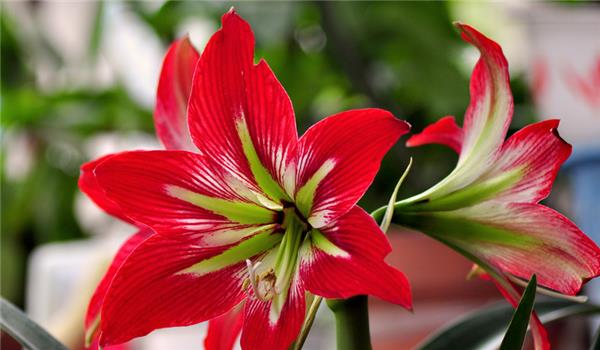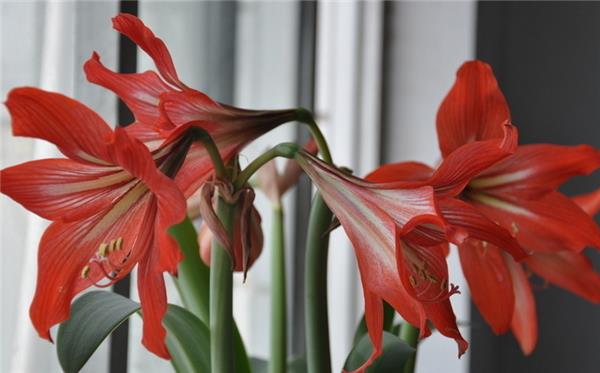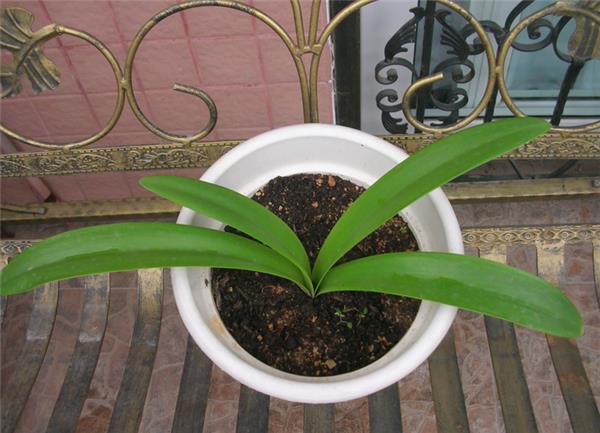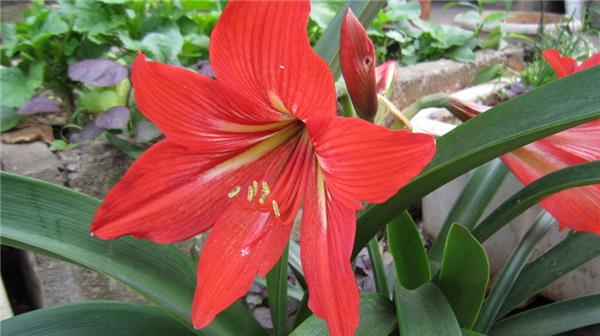Good things come in pairs and good flowers come in pairs to tell you about the introduction and breeding methods of orchids.
The pair of orchids is a beautiful flower. The pair of orchids originated in Peru and Brazil. Due to its many different varieties, it is widely potted and has high ornamental value. Let's take a look at the knowledge of Lan.

1. Introduction to Lan
For perennial herbs, bulbous hypertrophy, nearly spherical, 5-10cm in diameter, skin pale green or brown. Ophiorchids are perennial herbs belonging to Amaryllidaceae. The bulbs are plump, nearly spherical, 5-10cm in diameter, and the outer skin is light green or yellow brown. The leaves are opposite on both sides, banded, apex acuminate, 2-8, more leaves than after anthesis, 15-60cm long.

II. Cultivation techniques of pair orchid
1. cultivated pair orchid
Potted orchids should be large and full bulbs, planted in 18-20 cm diameter pots, potted in April, can bloom in June; potted in September, placed in warm indoor, the following spring can bloom in March and April. Mixed with humus-containing fertile loam to fine sand for potting soil is the most appropriate, bottom to spread gravel, in order to facilitate drainage. When planting bulbs, the top should be slightly exposed to the soil surface. Place potted plants in semi-shade, out of direct sunlight. During growth and flowering, it is advisable to apply fertilizer and water 2-3 times. During bulb dormancy period, watering amount should be reduced to keep bulb from withering. If too much watering, high temperature, stem and leaf long, hinder dormancy, affect normal flowering. Garden planting orchid, should choose good drainage site. Open field planting, in the spring of March-April planting ball, should be shallow planting, when the top of the bulb slightly exposed to the soil surface can be, late May to early June flowering. Dormancy in winter, the leaves on the ground die, bulbs are dug out in early October, placed in non-freezing places, and planted the following year. During planting, red disease spots on stems, leaves and bulbs should be prevented by soaking them in warm water at 40℃-44℃ for one hour during the dormant period of bulbs.
2. potted pair of orchids
Opposite orchid also known as hundred to lotus, Zhu Ding orchid, etc., for Amaryllidaceae perennial bulbous flowers. Sexual love warm, moist, avoid strong light exposure. It originated in tropical South America, but does not like high temperature, nor cold, suitable growth temperature of 18-23 degrees. It is suitable for fertile, loose, well-drained sandy loam. The orchid is dormant in winter and requires dryness. The temperature is 9-12 degrees Celsius, and the minimum temperature cannot be lower than 5 degrees Celsius. In the south of the Yangtze River Basin, it can survive the winter as long as it is protected slightly. Potted orchids pot should not be too large (generally use 16-20 cm diameter flower pot), so as to avoid pot soil long wet not dry, resulting in bulb rot, pot soil should be mixed with rotten leaf soil and sand preparation, before planting pot bottom apply some decomposed cake fertilizer or chicken duck manure as base fertilizer. When planting, 1/4 to 1/3 of the bulb will be exposed to the soil surface, after planting, the pot soil will be pressed solid, leaving 2-3 cm along the mouth, watering once permeable, after not more watering, maintain a low humidity, and avoid direct sunlight, wait for the leaves to grow about 10 cm long, then normal watering, and start topdressing, to stop fertilizing after the formation of buds (but after flowering can be appropriate fertilization, to promote bulb hypertrophy and enrichment). After flowering, the withered flower stems should be cut off in time so as not to consume the nutrients of the bulbs. After autumn watering should be gradually reduced, pot soil to a little dry as well. Winter should be moved indoors for winter, watering as little as possible to maintain the bulbs do not wither, the temperature should not be lower than 5 degrees, otherwise it will affect dormancy and flowering in the coming year.

3. cultivation points
The orchids bloom in April in spring and again in winter. Management should be strengthened early to promote flowering.
(1) Change the basin
To orchid grows fast, classics 1 year grows, should replace the flowerpot that adapts.
(2) Soil replacement
After planting for 1 or 2 years, the potted soil is lack of fertilizer. In order to promote the growth and flowering of the new year, new soil should be replaced.
(3) ramets
The orchid grows fast, after 1 or 2 years of growth, the head grows a lot of small bulbs, so in the pot, soil change at the same time to divide the plant, the big plant is a pot, the medium plant is a pot, the small plant is a pot.
(4) Fertilization
To orchid in change pot, change soil, planting at the same time to apply base fertilizer, after pot application phosphorus and potassium fertilizer once a month, fertilization principle is thin application frequently, in order to promote flower bud differentiation and flowering.

(5) Trimming
To orchid grows fast, leaf grows dense again, should change a pot, change soil at the same time lose leaf, withered root, plant disease root leaf is cut, leave exuberant leaf.
(6) Prevention and control of diseases and insect pests
In order to make the orchids grow vigorously and bloom early, pest control should be carried out. Anther spraying should be carried out once a month. Flower spraying should be carried out at about 9:00 a.m. and 4:00 p.m. on sunny days. It is not suitable to spray at noon to prevent phytotoxicity.
The above is the knowledge of blue, I hope it can help you.
The above is the knowledge of blue, I hope it can help you.
- Prev

Introduction and breeding method of Mountain Shadow Boxing from magnificent Mountain and Stone Bonsai to Green Plant
Introduction and breeding method of Mountain Shadow Boxing from magnificent Mountain and Stone Bonsai to Green Plant
- Next

The introduction and breeding methods of Tiger Eye evergreen let you grow the green plant of tiger and tiger.
The introduction and breeding methods of Tiger Eye evergreen let you grow the green plant of tiger and tiger.
Related
- Wuhan Hospital Iron Tree Blooming Result Was Instantly Frightened by the Gardener Master
- Which variety of camellia is the most fragrant and best? Which one do you like best?
- What is the small blue coat, the breeding methods and matters needing attention of the succulent plant
- Dormancy time and maintenance management of succulent plants during dormancy
- Minas succulent how to raise, Minas succulent plant pictures
- What are the varieties of winter succulent plants
- How to raise succulent plants in twelve rolls? let's take a look at some experience of breeding twelve rolls.
- Attention should be paid to water control for succulent plants during dormant period (winter and summer)
- Watering experience of twelve rolls of succulent plants
- Techniques for fertilizing succulent plants. An article will let you know how to fertilize succulent plants.

